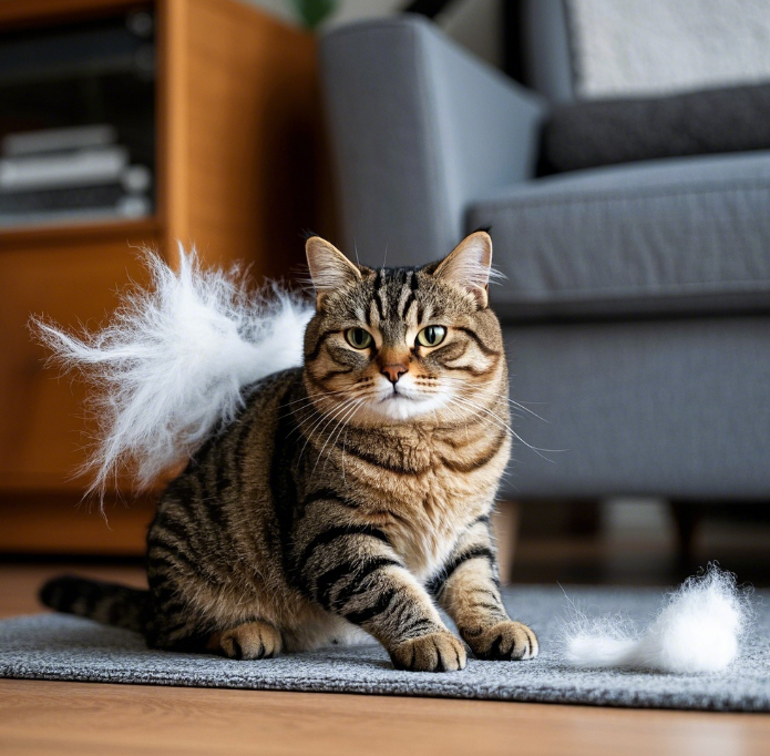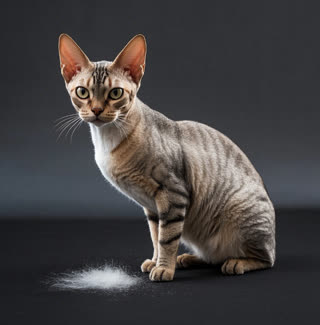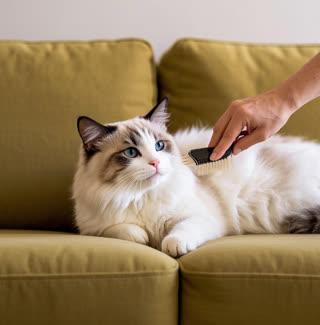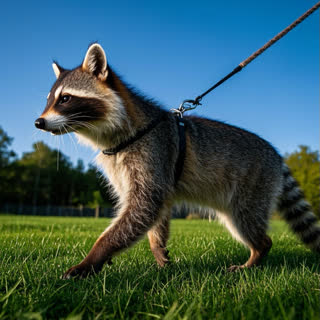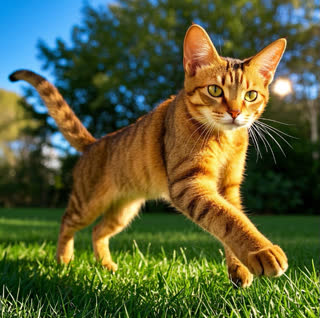Cats are beloved for their soft, luxurious coats, but maintaining that glossy fur isn’t always effortless. If your feline friend is struggling with excessive shedding, dryness, matting, or other coat issues, you’re not alone. Cat Coat Problems are common, but understanding the root causes and solutions can transform your cat’s health and appearance. In this guide, we’ll explore actionable cat shedding solutions, debunk grooming myths, and highlight the role of nutrition—like omega-3 for cat coat health—to keep your kitty looking and feeling their best.
Understanding Common Cat Coat Issues
A cat’s coat is more than just fur; it’s a reflection of their overall health. Before diving into solutions, let’s address the most frequent cat coat problems:
- Excessive Shedding
Cats shed naturally to replace old fur, but excessive shedding can signal stress, allergies, or hormonal imbalances. Breeds like Persians and Maine Coons are prone to heavy shedding, but even short-haired cats may over-shed if their diet lacks essential nutrients. - Dry, Dull Fur
A lackluster coat often stems from poor hydration, nutrient deficiencies, or environmental factors like dry air. Dehydration or insufficient omega-3 fatty acids can leave fur brittle and prone to breakage. - Matting and Tangles
Long-haired cats are especially vulnerable to mats, which form when loose fur isn’t brushed regularly. Mats can trap dirt, cause skin irritation, or even lead to infections if left untreated. - Skin Issues
Dandruff, itching, or redness may indicate allergies, parasites (like fleas), or underlying conditions like hypothyroidism. These issues require veterinary attention to prevent worsening.
Top Cat Shedding Solutions to Reduce Fur Loss
While shedding is normal, you can minimize it with these strategies:
- Optimize Nutrition
A balanced diet rich in high-quality protein and omega-3 fatty acids (found in fish oil or flaxseed) supports healthy skin and reduces inflammation. Look for cat foods with added vitamins A and E, which promote coat luster.Expert Tip: Consult your vet to ensure your cat’s diet meets their specific needs. Supplements like krill oil can also boost omega-3 intake. - Regular Grooming
Brushing your cat 2–3 times weekly removes loose fur and prevents mats. Use a slicker brush for long-haired breeds and a rubber brush for short-haired cats. Avoid over-bathing, as it strips natural oils. - Manage Stress and Environment
Stress from changes in routine, new pets, or loud noises can trigger excessive shedding. Provide a calm, consistent environment with plenty of hiding spots and interactive toys. - Hydration and Health Checks
Ensure fresh water is always available. If shedding persists, consult your vet to rule out medical issues like allergies or thyroid problems.
Debunking Cat Grooming Mistakes That Harm Your Cat’s Coat
Even well-meaning owners sometimes make grooming errors. Here’s what to avoid:
- Using Human Shampoos
Human products are too harsh for cats’ sensitive skin. Always opt for cat-specific shampoos formulated to maintain pH balance. - Over-Brushing or Rough Handling
Aggressive brushing can damage fur follicles and cause skin irritation. Start gently and reward your cat with treats to make grooming a positive experience. - Ignoring Dental Health
Poor oral hygiene can lead to nutritional deficiencies that affect coat quality. Brush your cat’s teeth regularly and provide dental treats. - Neglecting Seasonal Adjustments
Cats shed more in spring and fall. Adjust grooming routines during these periods to keep up with fur loss.
The Power of Omega-3 for Cat Coat Health
Omega-3 fatty acids are essential for feline health, particularly for maintaining a healthy coat. Here’s why they matter:
Reduce Inflammation: Omega-3s combat dry, itchy skin caused by allergies or environmental irritants.
Boost Shine: They nourish skin cells, promoting a glossy, hydrated coat.
Support Immune Function: A strong immune system helps cats recover from illnesses that impact fur quality.
How to Add Omega-3s to Your Cat’s Diet:
Include fish like salmon or mackerel (cooked, without seasoning).
Use veterinarian-approved fish oil supplements.
Look for cat food labeled with omega-3 fatty acids.
When to Seek Veterinary Help
While home care can resolve many cat coat problems, persistent issues may require professional attention. Contact your vet if you notice:
Patches of baldness or inflamed skin.
Excessive scratching or biting at the coat.
Changes in appetite, energy levels, or litter box habits.
Conclusion
Caring for your cat’s coat is a labor of love, but it doesn’t have to be overwhelming. By addressing cat shedding solutions, avoiding grooming mistakes, and prioritizing nutrition (including omega-3 for cat coat health), you can keep your feline companion’s fur soft, shiny, and healthy. Remember, a healthy coat is a sign of a happy cat—so start implementing these tips today!
Need more advice? Share your cat’s coat challenges in the comments below, and let’s find solutions together! 🐾
Disclaimer: This article is for informational purposes only. Always consult your veterinarian for personalized advice.
